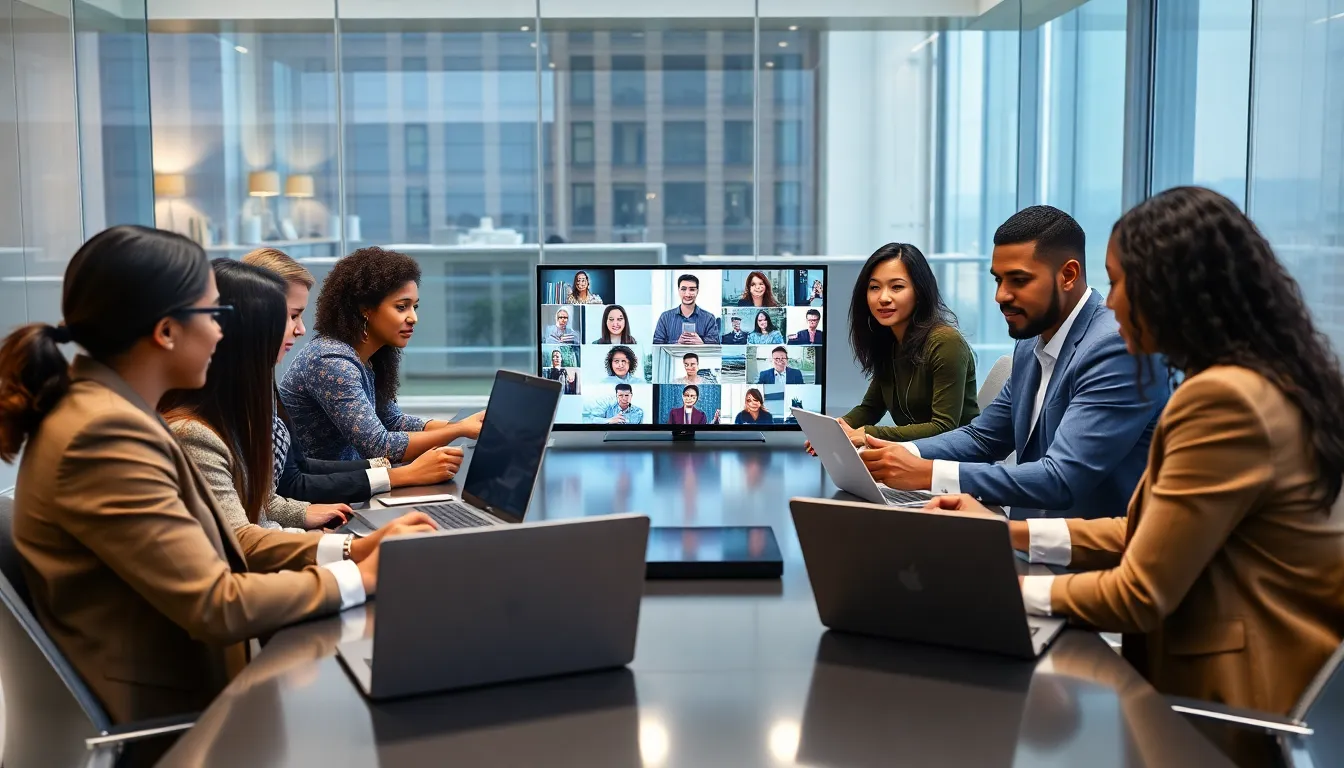Table of Contents
ToggleIn today’s fast-paced digital world, remote access apps have become essential tools for both individuals and businesses. They allow users to connect to their devices from anywhere, breaking down geographical barriers and enhancing productivity. Whether it’s accessing a work computer from home or troubleshooting a friend’s device, these apps offer unparalleled convenience.
As more people embrace remote work and online collaboration, understanding the best remote access solutions is crucial. With a variety of options available, users can find apps tailored to their specific needs. From security features to user-friendly interfaces, the right remote access app can transform how people interact with technology, making it easier than ever to stay connected and efficient.
Overview of Remote Access Apps
Remote access apps enable users to control devices from any location, facilitating seamless connectivity. These applications cater to various needs, from remote desktop access to file sharing, enhancing efficiency in remote work environments.
Key Features
- Connectivity: Allow connections from multiple devices, including desktops, laptops, and smartphones.
- Security: Employ encryption methods and authentication protocols to protect data during transmission.
- User Interface: Offer intuitive designs that simplify navigation and enhance user experience.
- Compatibility: Support various operating systems and platforms, ensuring wide-ranging accessibility.
Popular Use Cases
- Remote IT Support: Enable technicians to resolve issues on client devices without being physically present.
- Telecommuting: Allow employees to access office resources remotely, promoting flexibility.
- Collaboration: Facilitate teamwork among remote teams by granting shared access to files and applications.
Top Remote Access Apps
| App Name | Features | Platforms |
|---|---|---|
| TeamViewer | Remote support, file transfer | Windows, macOS, iOS, Android |
| LogMeIn | Cloud storage, remote printing | Windows, macOS |
| AnyDesk | High-performance connections | Windows, macOS, iOS, Android |
| Chrome Remote Desktop | Browser-based access | Web-based |
These remote access apps serve diverse scenarios, significantly improving productivity and collaboration. Adopting the right solution aligns with individual or organizational needs, ensuring effective remote operations.
Benefits of Remote Access Apps

Remote access apps provide several advantages that enhance user experience and efficiency in various settings. These benefits encompass improved productivity, increased flexibility, and added convenience.
Enhanced Productivity
Enhanced productivity occurs when users can access their devices and files from any location. Quick access to important work assets helps users complete tasks efficiently—whether in an office, at home, or on the go. Many remote access apps offer features like file sharing, screen sharing, and remote control options, streamlining collaboration and enabling team members to work together seamlessly. Users often report reduced downtime and faster response times due to instant access to necessary resources.
Flexibility and Convenience
Flexibility and convenience arise when users have the ability to connect to their systems anytime, anywhere. Remote access apps allow for easy switching between devices without losing progress. Users can troubleshoot problems remotely, attend virtual meetings, and manage tasks without geographical constraints. Accessing computers and applications through mobile devices further extends convenience, ensuring that work continues uninterrupted during travel or unforeseen circumstances. The adaptability of these apps supports diverse work styles and enhances overall job satisfaction.
Top Remote Access Apps
Remote access apps offer various features and pricing options tailored to user needs. Below are three top remote access solutions, including their key features and pricing structures.
App 1: TeamViewer – Features and Pricing
TeamViewer stands out for its intuitive interface and cross-platform capabilities. It offers remote desktop access, file transfer, and remote support features. Security is robust, employing 256-bit AES encryption. Users benefit from multi-user collaboration and session recording functionalities.
Pricing: TeamViewer provides a free version for personal use. Business plans start at $49 per month, offering additional features for commercial users.
App 2: AnyDesk – Features and Pricing
AnyDesk is noted for its high-speed connections and low latency, making it ideal for remote work. Features include file transfer, remote printing, and session recording. Its lightweight design ensures it runs smoothly on various devices and operating systems.
Pricing: AnyDesk offers a free version for personal use, while business plans begin at $10.99 per month, providing more extensive functionalities and support options.
App 3: LogMeIn – Features and Pricing
LogMeIn is recognized for its comprehensive remote access capabilities and user-friendly dashboard. It includes features such as file sharing, password management, and multi-device support. The app focuses on security with two-factor authentication and encryption standards.
Pricing: LogMeIn does not offer a free version, with plans starting at $30 per month for individuals and increasing for teams and business solutions.
Security Considerations
Remote access apps pose security challenges that require attention to safeguard sensitive information. Understanding critical security measures, such as data encryption and user authentication, is essential for users and organizations.
Data Encryption
Data encryption protects sensitive data during transmission and storage. Remote access apps utilize advanced encryption standards, such as AES-256, to secure data transfers. This encryption ensures that unauthorized individuals cannot intercept or read sensitive information. For example, when a user accesses a remote device, data packets are encrypted, maintaining confidentiality and integrity. Employing apps that prioritize strong encryption techniques minimizes the risk of data breaches significantly.
User Authentication
User authentication establishes the identity of individuals accessing remote systems. Multi-factor authentication (MFA) significantly enhances security by requiring users to provide two or more verification factors, such as passwords, security tokens, or biometric scans. This method reduces the likelihood of unauthorized access. For instance, if a user’s password is compromised, MFA adds an additional layer of protection. Enforcing strict user authentication processes strengthens overall security for remote access applications, ensuring only authorized personnel retain access to sensitive information.
The rise of remote access apps has transformed how individuals and businesses operate in a digital world. With the ability to connect to devices from virtually anywhere these applications foster greater productivity and collaboration.
Choosing the right remote access solution tailored to specific needs can enhance efficiency and streamline workflows. As users navigate various options it’s crucial to prioritize security features to protect sensitive data.
Embracing remote access technology not only supports diverse work styles but also empowers teams to work effectively regardless of their physical location.




